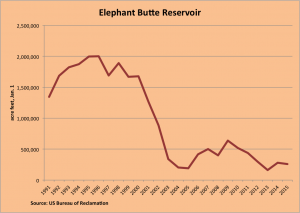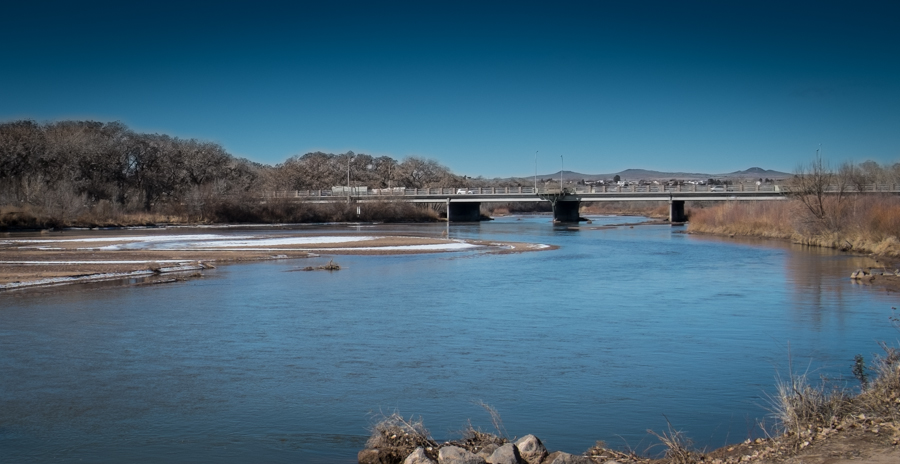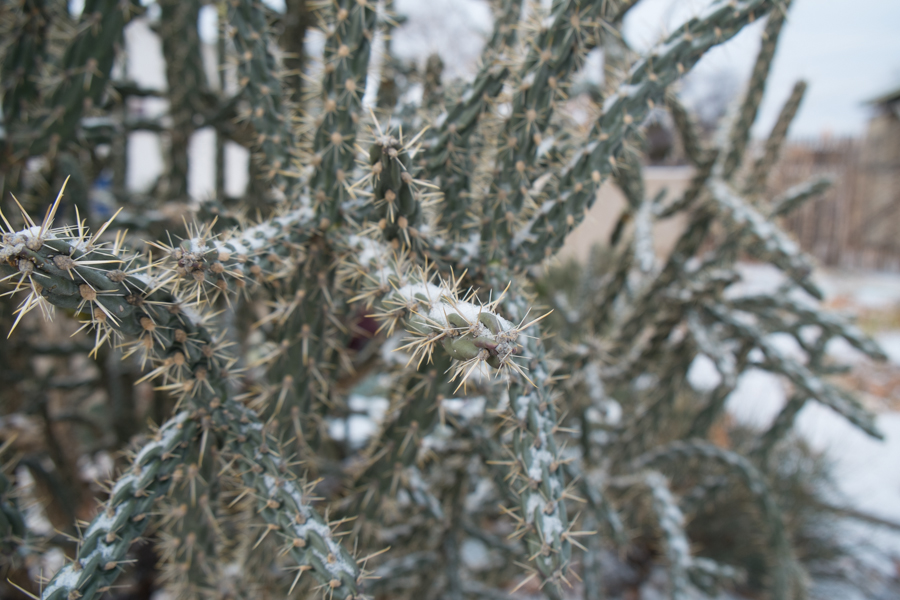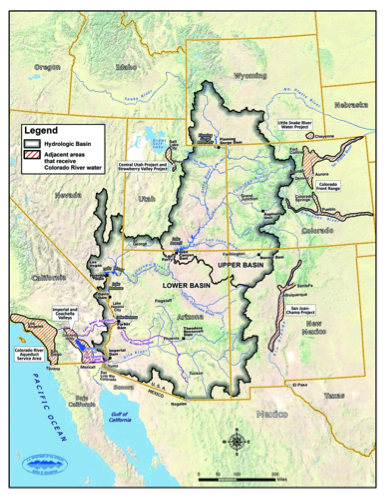I guess it’s as good as any starting place here to say that Edward Baptist’s The Half Has Never Been Told: Slavery and the Making of American Capitalism is one of the best book’s I’ve read.
is one of the best book’s I’ve read.
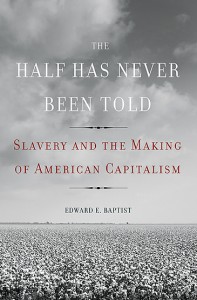
The Half Has Never Been Told, Basic Books
I come at this from the privilege of growing up in white American suburbia. Baptist’s book suggests this is my story, that the great economic engine that provided the foundation of my affluent American life grew out of the economics of slavery and, more specifically, torture. It seems fair to ask me to confront that, to think through its implications.
The core of Baptist’s argument is that the explosion of the global economy in the first half of the 19th century was built on the backs of slaves:
The amount of cotton the South grew increased almost every single year from 1800, when enslaved African Americans made 1.4 million pounds of cotton, to 1860, when they harvested almost 2 billion pounds. Eighty percent of all the cotton grown in the United States was exported across the Atlantic, almost all of it to Britain. Cotton was the most important raw material of the industrial revolution that created our modern world economy. By 1820, the ability of enslaved people in southwestern frontier fields to produce more cotton of a higher quality for less drove most other producing regions out of the world market. Enslaved African Americans were the world’s most efficient producers of cotton. And they got more efficient every year, which is why the real price of the most important raw material of the industrial revolution declined by 1860 to 15 percent of its 1790 cost.
Half of the strength of Baptist’s argument is on display in passages like this, the thorough and dispassionate language of the economic historian – pounds of cotton per year per “hand”, the enslaver’s term for the means of cotton production. As I understand Baptist himself and other discussions about the book, in this argument he is challenging a historical orthodoxy – the argument that slavery was an immoral economic dead end, a poor means of production practiced in a backwards culture that was doomed by its internal inefficiencies, left stranded by the industrial technology and cultural and economic innovations that made America great. Here is Baptist’s characterization of that orthodoxy’s central assumption:
The first major assumption is that, as an economic system – a way of producing and trading commodities – American slavery was fundamentally different from the rest of the modern economy and separate from it. Stories of industrialization emphasize white immigrants and clever inventors, but they leave out cotton fields and slave labor. This perspective implies … that slavery and enslaved African Americans had little long-term influence on the rise of the United States during the nineteenth century, a period in which the nation went from being a minor European trading partner to becoming the world’s largest economy – one of the central stories of American history.
In fact, Baptist argues, slavery was at the heart of the nation’s economic explosion. Much as William Cronon did with the expansion of agriculture in Nature’s Metropolis (another favorite book), Baptist shows how innovations in finance and capital (debt financing and mortgages on slaves), often driven by northerners who were allowed to be aloof from the immorality while profiting, enabled slavery’s expansion.
(another favorite book), Baptist shows how innovations in finance and capital (debt financing and mortgages on slaves), often driven by northerners who were allowed to be aloof from the immorality while profiting, enabled slavery’s expansion.
If this was just economic history, it would not have the power that it does. Just as Baptist marshals economic data, he also marshals the stories of slaves, and the technology of torture, both social and physical, that tore them from families as slavery spread across what was then “the southwest” of the United States, from Georgia all the way to Texas, and increased their efficiency in picking cotton by whipping them if they didn’t meet quotas:
Try as he might, Campbell could pick no more than ninety pounds between first light and full dark. But the planter, “Belfer,” had told the young man that his daily minimum was one hundred pounds – and that on this day he would “have as many lashes as there were pounds short”.
It forced the burden of innovation – clever ways to pick more – onto the enslaved, and Baptist rightly calls it what it was – a technology of torture. It proved remarkably efficient. In the 1820s, Baptist documents cotton picking rates of 100 pounds per person per day. By the 1850s, the rate of cotton picked had doubled. The physical machinery – “the basic mechanics of arms, backs, and fingers” – remained unchanged. Yet the efficiencies of what Baptist calls “the whipping machine” steadily improved as the enslavement of more and more African Americans spread across the growing nation. This is not the static economic and moral backwater doomed by its own inefficiencies that the orthodoxy would argue, but a dynamic, vibrant, growing thing. Treating it both as technology (and therefore central to our economic history) as well as torture (and thus central to our moral history) is what gives this book its power.
You can see where Baptist’s questioning of the orthodoxy is headed:
If slavery was outside of U.S. history, for instance – if indeed it was a drag and not a rocket booster to American economic growth – then slavery was not implicated in US growth, success, power, and wealth. Therefore none of the massive quantities of wealth and treasured piled by that economic growth is owed to African Americans.
I’m not sure what to do with this in this winter of our national racial discontent, but as Ta-Nehisi Coates argued last summer in the Atlantic, “Until we reckon with our compounding moral debts, America will never be whole.”

